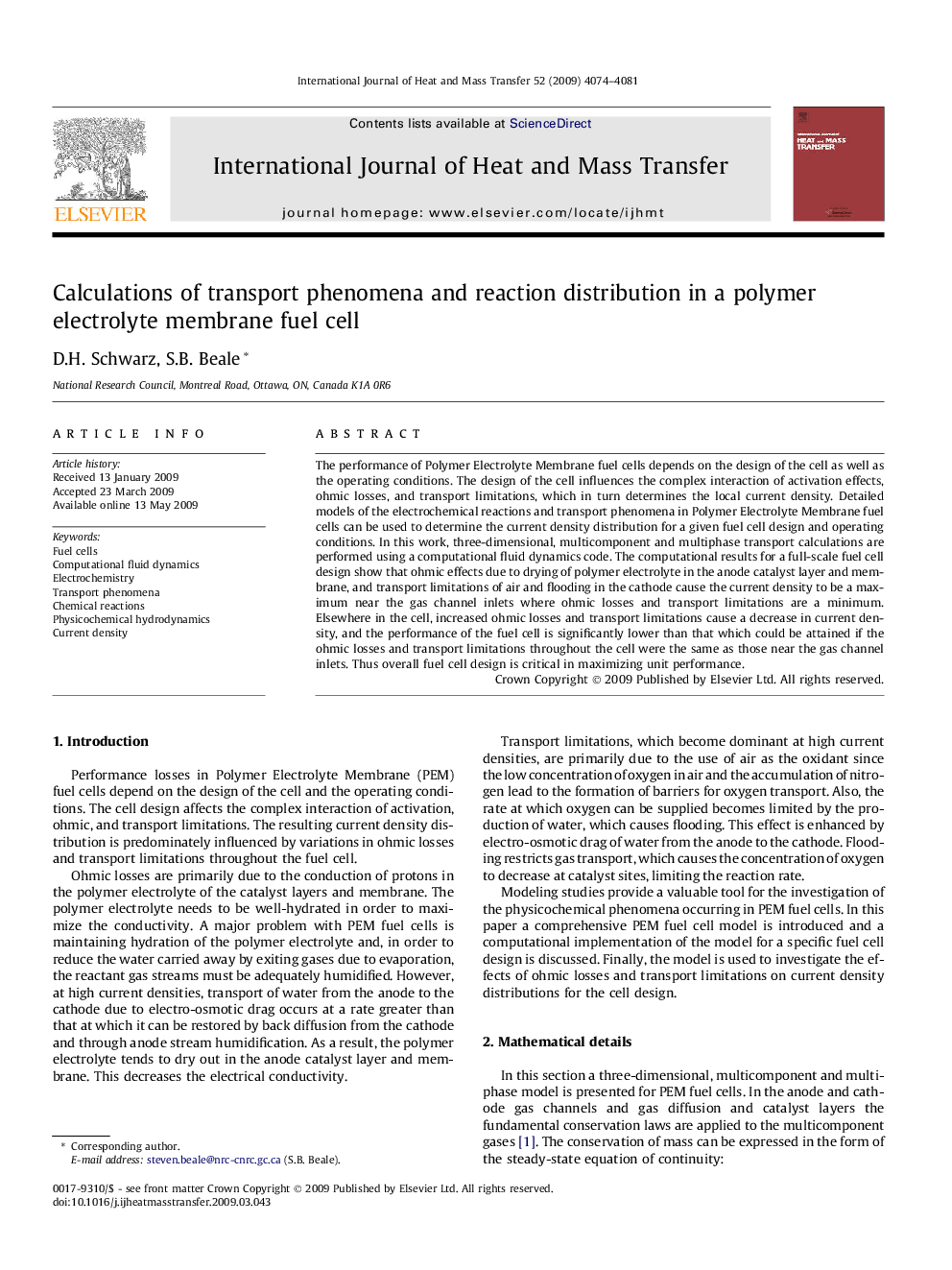| Article ID | Journal | Published Year | Pages | File Type |
|---|---|---|---|---|
| 659346 | International Journal of Heat and Mass Transfer | 2009 | 8 Pages |
The performance of Polymer Electrolyte Membrane fuel cells depends on the design of the cell as well as the operating conditions. The design of the cell influences the complex interaction of activation effects, ohmic losses, and transport limitations, which in turn determines the local current density. Detailed models of the electrochemical reactions and transport phenomena in Polymer Electrolyte Membrane fuel cells can be used to determine the current density distribution for a given fuel cell design and operating conditions. In this work, three-dimensional, multicomponent and multiphase transport calculations are performed using a computational fluid dynamics code. The computational results for a full-scale fuel cell design show that ohmic effects due to drying of polymer electrolyte in the anode catalyst layer and membrane, and transport limitations of air and flooding in the cathode cause the current density to be a maximum near the gas channel inlets where ohmic losses and transport limitations are a minimum. Elsewhere in the cell, increased ohmic losses and transport limitations cause a decrease in current density, and the performance of the fuel cell is significantly lower than that which could be attained if the ohmic losses and transport limitations throughout the cell were the same as those near the gas channel inlets. Thus overall fuel cell design is critical in maximizing unit performance.
